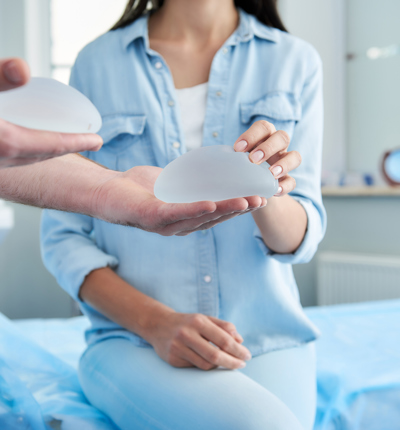
Early diagnosis is key in the rare cancer linked to textured breast implants
Zahra Nanji is currently investigating a legal claim for women who have Allergan textured breast implants linked to a rare form of cancer known as BIA-ALCL
Posted on 30 June 2019
Over the last six months Leigh Day has been approached by more than 350 women who have Allergan textured breast implants and who are concerned about developing the rare form of breast implant related cancer known as breast implant-associated anaplastic large cell lymphoma or BIA-ALCL.
BIA-ALCL is a serious but rare type of non-Hodgkin lymphoma (a cancer that affects the immune system) that may develop many months or years after a breast implant procedure. BIA-ALCL usually presents as an accumulation of fluid (seroma) between the implant and the surrounding tissue.
Women who have the implants removed can make a full recovery, but if left untreated the disease can spread throughout the body and become much more serious and can become life-threatening.
As of February 2019 the UK Regulator, the Medicines and Healthcare products Regulatory Agency (MHRA), has received 62 reports of ALCL in patients with breast implants, of which 52 meet the WHO diagnostic criteria for BIA-ALCL. Leigh Day are now representing 11 of those women a result of their confirmed ALCL diagnoses. All of these women are different, as are the reasons why they had their implants, and their route to diagnosis and now treatment has also varied greatly. However, a recurring theme of the utmost importance has been that of early diagnosis.
Delays in diagnoses are common for women. Two legal academics from the University of Maryland, Diane Hoffman and Anita Tarzian published a paper in 2001 entitled ‘The Girl Who Cried Pain’[1].
The paper analysed the manner in which gender bias impacted upon clinical management and looked at several previous studies where the authors attributed issues of misdiagnosis and delay in women’s health to “a long history within our culture of regarding women’s reasoning capacity as limited”.
A paper published in 2018, which explored breast cancer and its detection found there was a delay in early diagnosis in all the women who participated in the study. The authors concluded that women receive limited information and professional support for breast health.
Many of the delays and misdiagnoses affecting women can also be traced back to how doctors and health professionals are educated. A National US medical student survey into sex and gender in medical education found that only 43.1 % of students reported that their curriculum had given them a better understanding of sex and gender medicine, and only 34.5% report they would feel prepared to manage sex and gender difference in health care.[2]
Women and men can have different symptoms when they have the same condition and doctors are more likely to recognize the male pattern of pain. For example, chest pain is the most commonly reported symptom of a heart attack in men, women typically also report subtler signs such as fatigue, indigestion, shortness of breath, and pain in the neck, jaw, or arms. Women and their doctors alike are more likely to attribute these symptoms to other causes, like stress. It goes without saying that women and men are different. When we are teaching medics, gender based differences should be appropriately addressed to ensure that both sexes can be properly treated.
What can you do to improve your chances of getting an accurate, prompt diagnosis?
- Trust your instincts: You know when something is not right, keep pushing for answers until you feel you are comfortable that your concerns have been appropriately addressed.
- Keep records: Keeping a record of your menstrual cycle, a food diary and a symptoms diary (as appropriate) will allow you to track patterns and fluctuations in symptoms. Remember to also keep notes from all medical visits to track how implementation of any advice has affected your symptoms.
- Prepare to see your doctor: With appointments typically limited to 10 minute slots, list out your concerns and questions ahead of seeing your doctor.
- Ask questions: If you do not understand something, ask! If you want to understand the implications of taking a certain medication or having certain tests, again ask.
- Seek a second opinion: If you don’t feel like your doctor is treating you like a partner in your own care, seek a second opinion. It goes full circle, trust yourself in knowing if something is not right.

